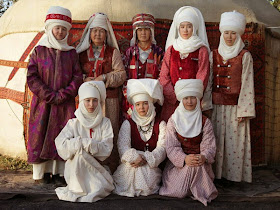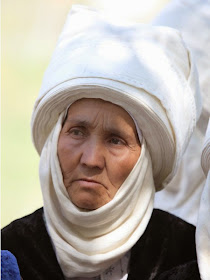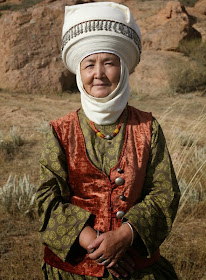 |
| Cover of Lost Enlightment |
Lost Enlightenment: Central Asia's Golden Age from the Arab Conquest to Tamerlane
First up is Frederic Starr's book that recounts how, between 800 and 1200 AD, Central Asia led the world in trade and economic development, the size and sophistication of its cities, the refinement of its arts, and, above all, in the advancement of knowledge in many fields.
Central Asians achieved remarkable breakthroughs in astronomy, mathematics, geology, medicine, chemistry, music, social science, philosophy and theology.
They gave algebra its name, calculated the earth's diameter with unprecedented precision, wrote the books that later defined European medicine, and penned some of the world's greatest poetry. Rarely in history has a more impressive group of polymaths appeared at one place and time.
After reading the first chapter (free download here) I was hooked and immediately ordered a copy. It is also available as an e-book. If you have read Jonathon Lyons The House of Wisdom, then you will like this book.
Art books: Usto Mumin and Alexander Volkov
 |
| Cover of book about Usto Mumin (painting: The Fiancé) |
Born in Russia, Alexander Nikolayev moved to Samarkand in 1920 and joined the Masters of the New East movement. He converted to Islam and took the name Usto Mumin.
His avant garde style was influenced by oriental miniatures. Usto Mumin was repressed in the 1930s because of his homosexuality. After release from the gulag, he settled in Tashkent and worked as book illustrator and theatre designer.
In the same series, Masters of Arts of Uzbekistan, from Tashkent's Gafur Gulyam publishing house, I found a similar book on Alexander Volkov, one of my favourite Uzbek artists. Christies held an exhibition of his work late 2012.
Both the Savitsky collection in Nukus and Tashkent's State Museum of Arts have excellent collections of Usto Mumin's and Volkov's works.
Memories of Baku
In preparation for a trip to Azerbaijan next year, I am looking forward to reading Memories of Baku: Beyond the Land of Fire.
Editor and co-author Nicolas V. Iljine, uses a collection of photographs, art and essays to show the changes in Azerbaijan as it became a large oil-producing nation, particularly in the capital city of Baku. Iljine had first started the project after obtaining a postcard collection from the end of the 19th century of Baku, and his interest turned into a "passion for discovering local impressions from further afield in Azerbaijan".
Setting the East Ablaze: Lenin's Dream of an Empire in Asia
 |
| Cover Setting the East Ablaze |
Chingiz Aitmatov and his Land
This gorgeous book of black and white photographs was produced by Maek Films with photographs by Bishkek-based Alexander Fedorov. One of the most famous Central Asian writers, Chingiz Aitmatov wrote splendid novels about the people of the Kyrgyz steppe and the impact of the USSR on Kyrgyz nomads. (e.g. Jamilia)
He was president of the Cinematographers' Union for many years. These stunning photographs are not only of the magnificent Kyrgyz landscape, but also of Aitmatov and scenes from films based on his novels.
New Year Wishes
To all Uzbek Journeys clients and readers of this website - I wish you all an interesting, happy and safe 2015.
Related posts:
Holiday Reading 2013: Central Asian Titles
Holiday Reading 2012: Central Asian Titles
Central Asian Art and Craft Books: Holiday Reading 2011
Silk Road Media: An Uzbek Entrepreneur in London (for book orders)
Uzbek Journeys Book List










.%2BImage%2Bby%2BErkin%2Band%2BArthur%2BBoljurovs.jpg)


